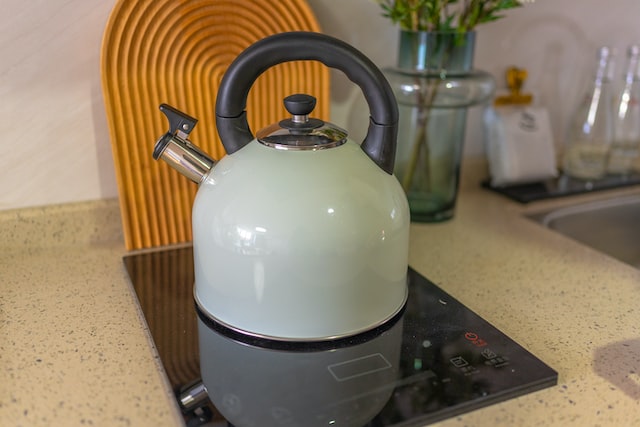Kettles are pretty simple devices. They boil water for you and keep it warm. But how much energy does a kettle use? Adjusting something like how often you boil your kettle or how full it is when boiling can reduce your consumption and save on your electricity bill.
Let’s examine the cost of running an electric kettle to understand better how to reduce energy usage in this small but essential way.
How Much Electricity Does a Kettle Use?
Electric kettles can use about 60 watts, but how much energy does it use? Kilowatt-hours (kWh) are energy units, and one kWh represents 1,000 watts of power expended over one hour.
To boil a litre of water to 100°C in an electric kettle would require approximately 0.06 kWh.
Your home’s energy cost varies slightly depending on where you live. Read more to learn how you can conserve energy and drive it down.
How much energy you use depends on how often you boil your kettle and how full it is each time. Boiling a whole kettle uses more than twice as much energy as boiling just enough water for your needs, so don’t overfill your kettle.
3 Energy-saving Tips
Adjusting small things like how often you boil your kettle and how full it is can save you electricity bills. Here are simple ways you can reduce your energy consumption.
Do Not Fill the Kettle when you only want One Cup.
How much energy you use depends on how often you boil your kettle and how full it is each time. Boiling a litre of water when you only need 300ml is a surefire way to waste electricity and raise your utility bill.
If you boil your kettle more than once a day, which many households do, that can add up to a significant amount of energy over time. Why not keep water warm in a flask instead of boiling it repeatedly? It also helps to know some simple ways to ensure your kettles are as efficient as possible.
To conserve energy, avoid filling your kettle with more water than you need. It takes less electricity for our kettle to heat smaller amounts of water.
Kettles Need To Be Descaled Regularly in Hard Water Areas
The inside of your kettle will gradually become covered in limescale as time passes. This can affect its performance and make it difficult to clean. To ensure you get the most from your model, describe it regularly, ideally once every six months.
The process takes less than an hour, and most people find that they can do it themselves using products readily available at their local hardware store or purchased online.
This could help improve your kettle’s efficiency and make your hot drinks taste more pleasant!
Unplug Your Kettle
Even while a kettle isn’t the most significant energy consumer, it will still increase your bill unnecessarily. Therefore, turning it off at the mains is preferable when not in use.
Even if you aren’t boiling your kettle, your kettle still uses energy. Numerous appliances in your home, like your printer, laptop charger, and electric stove, draw energy while they are still plugged in.
That implies that they keep using electricity, unnecessarily raising their monthly energy bill. However, there is a simple fix: disconnect your kettle and unused appliances while not in use.
By unplugging them, you’ll prevent energy from stealthily evaporating and driving up your costs, ultimately saving both electricity and cash.
Final Kettle Wattage Usage Saving Tips
Since the kettle is one of the most popular household items, it’s unsurprising that many people have questions about its energy use. The good news is that with a little bit of planning, there are lots of ways you can save on your electricity bill!
Now that you know how much energy your kettle uses, try using less than half full when boiling water to reduce the cost of running it each day. Knowing the electricity rates by zip code helps individuals estimate the cost of electricity consumption, which is crucial for budgeting purposes.
You may also be interested in reading our related blogs on running a sustainable home:
How to live a more sustainable life
How to make your home more sustainable home
Create a clutter-free, organised, sustainable home

